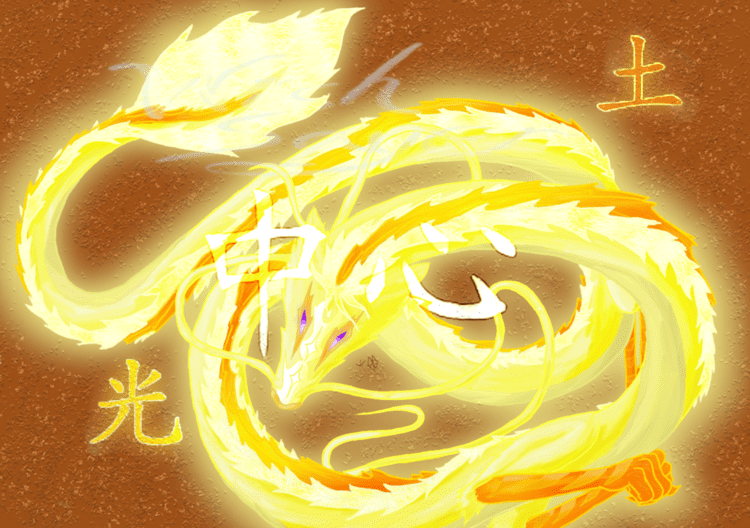 | ||
The Yellow Dragon (traditional Chinese: 黃龍; simplified Chinese: 黄龙; pinyin: Huánglóng; Cantonese Yale: Wong4 Lung4; Japanese: Kōryū or Ōryū; Korean: Hwang-Ryong; Vietnamese: Hoàng Long) is the zoomorphic incarnation of the Yellow Deity of the centre of the universe in Chinese religion and mythology.
Contents
The Yellow Emperor or Yellow Deity was conceived by a virgin mother, Fubao, who became pregnant after seeing a yellow ray of light turning around the Northern Dipper (in Chinese theology the principal symbol of God). Twenty four months later the Yellow Emperor was born and was associated to the colour yellow because it is the colour of the Earth (Dì 地), the material substance, in which he incarnated.
Myths of Fuxi and Huangdi
According to legends the Yellow Dragon already manifested hornless to Fuxi, emerging from the River Luo, and instructing him with the elements of writing. When it appeared before Fuxi, it filled a hole in the sky made by the monster Gonggong.
The Yellow Emperor was said to have turned in the form of the Yellow Dragon at the end of his life, to ascend to Heaven. Since the Chinese consider him to be their ancestor, they sometimes refer to themselves as "children of the dragon". This legend also contributed towards the use of the Chinese dragon as a symbol of imperial power.
The Chinese national flag from 1889-1912 is also called the Yellow Dragon Flag (simplified Chinese: 黄龙旗; traditional Chinese: 黃龍旗; pinyin: huánglóng qí).
Other uses
In East Asian culture, the Yellow Dragon is the fifth symbol completing the Sixiang (Four Symbols). This deity is the centre of the cosmos and it represents the element earth, the Chinese quintessence, as well as the changing of the seasons.
The Yellow Dragon does not appear in Japanese mythology: the fifth element in the Japanese elemental system is the void, so there cannot be an animal representing it. However, some consider the Ōryū as the Japanese counterpart of the Yellow Dragon since they share some similarities.
